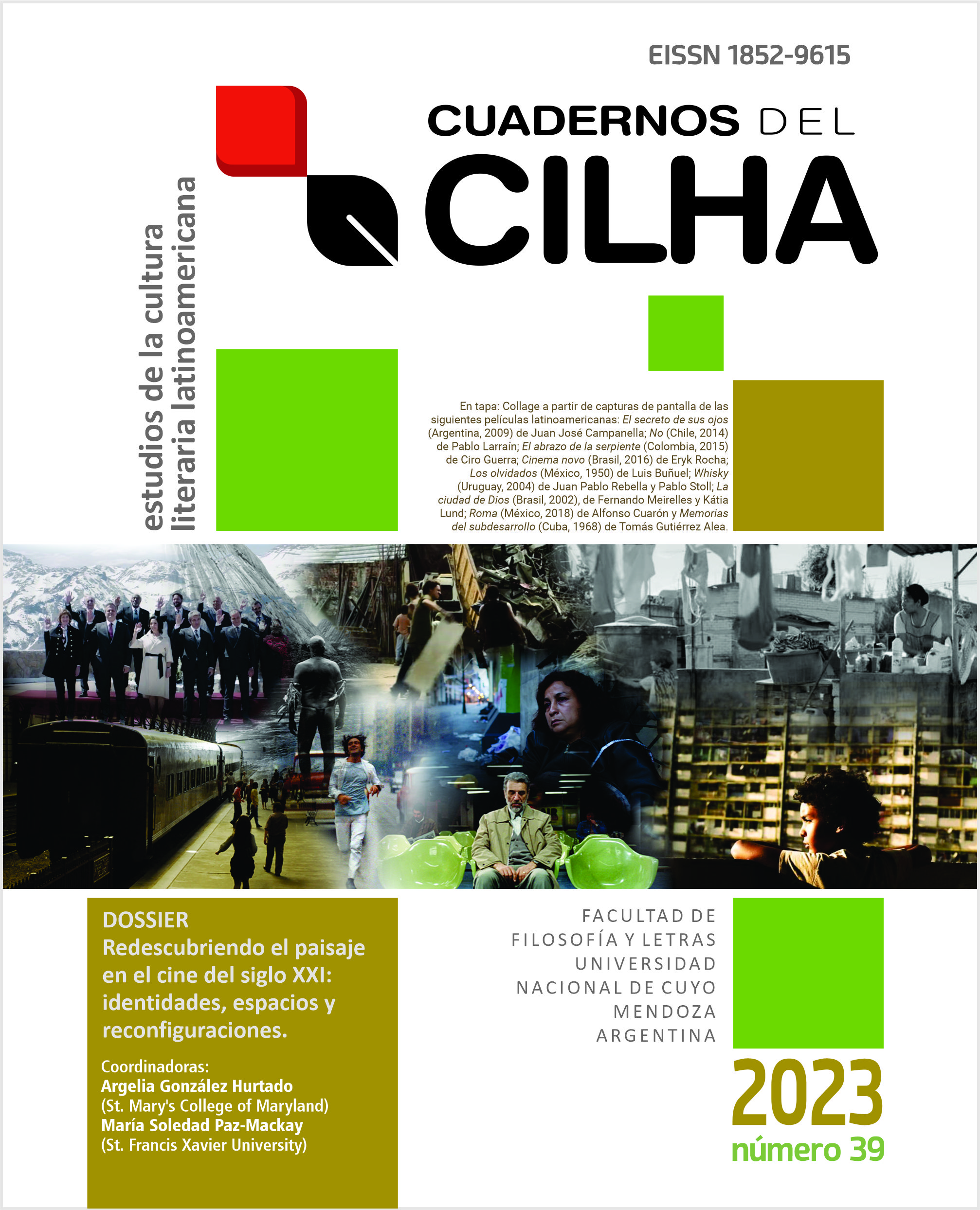The despotic regime of the epistolary writer in El pudor del pornógrafo de Alan Pauls
DOI:
https://doi.org/10.48162/rev.34.064Keywords:
letters, pornographic imagination, betrayal, face, nameAbstract
El pudor del pornógrafo (Pauls, 1985) is a novel of pornographic imagination that reformulates not only the conventional pornographic narrative such as the gothic novel, but can also be characterized as a series of appropriationist resources used by its author. Pauls also appeals to the corruption of the epistolar genre, to the amorous perversion suggested by letters under threat of unnameable dangers that cipher other parodies: risks of interception, linked to an epoch signed by political terror and rewritten in a fantastic key; literary paternity expressed as molecular becomings that traverse the protagonists (a witch and a vampire): demonic flows in the act of writing, subversion of the pornographic precept of placing the pleasure principle before the principle of efficiency; disenchantment in the amorous utopia, betrayal, orchestrated by a feminine protagonist who experiences a state of becoming and indicates that in order to be capable of love, it is necessary to have discarded love, the face and names. The body without organs of writing has been captured in letters that subsitute the body, the fragments that compose it, in the epistolar writing of the novel.
References
Ainsa, F. (1986). Identidad cultural de Iberoamérica en su narrativa. Editorial Gredos
Deleuze, G. y Guattari, F. (2004). Mil mesetas. Pre-Textos.
Derrida, J. (2008). El animal que luego estoy si(gui)endo. Editorial Trotta.
Fernández, Á. (2017). La reverberación del espanto: espectros de la Historia en El pasado de Alan Pauls.
A contracorriente. Una revista de estudios latinoamericanos, 15(1), 103-126.
Fischer, C. (1997). Gärten der Lust. Metzler Verlag.
Foster, H. (2016). El retorno de lo real. La vanguardia a finales de siglo. Ediciones Akal.
Foucault, M. (2010). El cuerpo utópico. Las heterotopías. Nueva Visión.
Hoffmann, E. T. A. (2011). Vampirismo. Reino de Cordelia.
Lojo, M. R. (2013). La novela histórica en la Argentina, del romanticismo a la posmodernidad. Cuadernos del CILHA, 14(19), 38-66.
Martínez, M. L. (2019). Huellas del yo en Historia del pelo de Alan Pauls. Letras (Lima), 90(131), 188-208.
Pauls, A. (2010). Historia del pelo. Editorial Anagrama.
Pauls, A. (2014). El pudor del pornógrafo. Editorial Anagrama.
Pimentel, L. A. (2005). El relato en perspectiva: estudio de teoría narrativa. Siglo Veintiuno Editores.
Rodríguez, E. (2020). Nacer a destiempo: sobre El pudor del pornógrafo, la última novela de Alan Pauls. Revista Landa. Revista do Núcleo Onetti de Estudos Literários Latino-Americanos, 8(2), 274-290.
Sontag, S. (1997). La imaginación pornográfica. En Estilos radicales. Taurus.
Violi, P. (1987). La intimidad de la ausencia: formas de la estructura epistolar. Revista de Occidente, (68), 87-99.
Virguetti, P. (2018). Las máscaras de Eros en El pudor del pornógrafo de Alan Pauls. Presses universitaires de Bordeaux. https://hal-u-bordeaux-montaigne.archives-ouvertes.fr/hal-02542915/document
Vitallini, R. (2007). Brujas, hombres lobo y vampiros. Grupo Editorial G.M.R.
Whitman, W. (2014). Hojas de hierba. Colección Visor de Poesía.





















